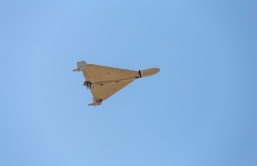A visible-light image from NASA's Terra satellite revealed Tropical Cyclone Gelena was strengthening off the northeastern coast of Madagascar.
On Feb. 7, 2019, the Moderate Resolution Imaging Spectroradiometer, or MODIS, instrument aboard NASA's Terra satellite captured a visible image of Tropical Cyclone Gelena. The visible-light image showed bands of thunderstorms wrapping into what the Joint Typhoon Warning Center called "an intermittent eye feature." The western quadrant had the bulk of clouds and thunderstorms that extended to the northern tip of Madagascar.
At 10 a.m. EDT (1500 UTC) on Feb. 7, Gelena was located near 13.1 degrees south latitude and 53.7 east longitude, approximately 453 nautical miles north-northwest of St. Denis, La Reunion Island. Gelena was moving to south-southeast. Maximum sustained winds were near 75 knots (86 mph/139 kph). Gelena is a Category 1 hurricane on the Saffir-Simpson hurricane scale.
Forecasters at the Joint Typhoon Warning Center expect Gelena to strengthen rapidly while moving southeast. Gelena is forecast to move away from Madagascar over the next several days, but will pass close enough to Mauritius for the island to feel the tropical cyclone's effects.
The storm will peak at 120 knots (138 mph/222 kph) upon closest approach to Rodrigues on Saturday, Feb. 9.








